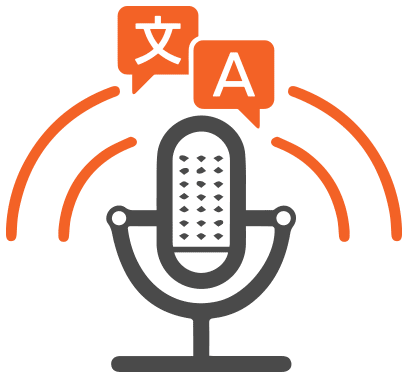
A Synopsis On Translation And Transcription
Often you find people confuse these two words, translation and transcription. It might be because of the prefix that both words have, but the reality of things is that these two words are different. Translation is really a complex process that has rules and guidelines on how to do it depending on the languages involved, and so is transcription, which also works around several rules and guidelines. So you might ask what is translation and what is transcription and are whether they related? In language services, these two are both translation processes. Translation and transcription likewise, are processes used in science. I will state the definitions of these two words before I get into their differences.
What is Transcription?
Transcription is a process that involves listening to an audio or video file, and writing everything you hear. This is a one-on-one conversion of an audio file into a script in the exact language used in the original audio clip, for example, an audio clip in Portuguese transcribed will turn into a Portuguese written script. The word Transcribe came from the Latin verb transcriber, which is a compound word comprising trans or over and scriber or write.
What Exactly Does Audio-Visual Transcription Entail?
- Normally a transcriber usually works only on language when converting audio files to written scripts, so being 100% conversant with that language is essential.
- Transcribers who are the people who carry out a transcription service usually concentrate more on the information they are trying to convey in written form and so more times than not colloquial expressions are not essential.
- The process that is transcription deals with two formats these are the recorded version and written scripts.
- Usually, in Transcription, the language used in an audio file might be sign language or a speech and aside from verbal sources transcription can be done for content prepared in a different writing system.
- Transcription plays a great role in academic linguistics in outlining vital components of systems like sociolinguistics, dialectology, conversation analysis, and phonetics. These systematic methods rely highly on speech technology, and so transcription plays a big role in converting them into written form.
- Another field other than Academics where we can see transcription being used is in courts during court proceedings there is always someone seated with a machine jotting down the proceedings. In the legal industry, a lot of transcriptions take place also during witness statements, transcribed after recording and then handed over as evidence in court.
- We can also see transcription being applied in advertising campaigns for products in foreign markets. This usually ensures that the promotional messages remain consistent.
- Before work on a transcription project begins, it takes much longer for the service provider to process the transcription. Normally a project manager has gone through the recorded version of the file to determine which category it fits in to assign it to the best fit transcriber, whether it is finance, legal or medical. The assigned translator will listen to or watch the recording and make a written copy of the script. Translation may take place later if the client needs it.
For a more in-depth overview of what is audio-visual transcription, check out this article on what is audio (video) transcription before we delve into the different audio-visual transcription software available in the market.
What is Translation?
Translation is transforming written scripts from one language to another language. It sounds like it doesn’t need a lot of work, but it is a job that needs a lot of dedication. It came from the Old French verb, the translator and the Latin verb translates, meaning carried over.
What Exactly Does Language Translation Entail?
We can now focus on the side of translation. As seen above, transcription has specific specs set in stone for its service, and below we will see what specs they set in stone for translation services. One thing though is that they both require the services of a linguist proficient in languages.
- We noticed on the transcription side that transcription only deals with one language, but in translation two languages must be available for the process to be termed, translation. It requires the source which is the original language and the target language which is the language translated into.
- Translation always deals with written content most of the times but on very few occasions a client might want audio translated so the translator must be able to transcribe and translate the audio at the same time in a process called transcription-translation.
- Translation needs very creative individuals to work on them. The thing with translation is that it’s not a word to word translation but one needs to be creative enough to ensure that the context of whatever document they are working on remains the same and is not far off which may affect the quality of the original message.
- Because of the emergence of the internet, which has made the world a global village, globalization and multiculturalism have been experienced with different documents being made available to the world at large through a single click. The availability of translated content increases its accessibility, increasing the contents’ reach, potentially. From a legal point of view, delivering content in different languages shows acceptance of diversity.
- Just like how transcription deals with two formats, Translation always deals with only one format, which is the written content format, though from time to time there are clients who request recorded audio translation. From long ago we have always known translation for being in written form.
- There are two categories of translation services and they are literary ‘and not-literally translations. All literary translations which are the hardest to deal with include translations of literature such as novels, poems, stories, and even musical pieces. The non-literary forms of translations include translations of legal, medical, scientific-technical and other specific related forms of translation. Non-literary translations usually need professionals of the said industry who know the jargon used in the documents to work on them.
- The translator must be very proficient in the target language, so it is vital to work only with translators who are native speakers. The translator also has to have a deep understanding of the culture of the target language and its nuances, grammatical differences, idioms, slang, and idiomatic expressions.
For a more in-depth overview of what is audio-visual transcription, check out this article on what is language translation before we delve into the different audio-visual transcription software available in the market.
What Are The Similarities Between Translation And Transcription?
We have looked at the differences between translation and transcription and to conclude this write up I will highlight some similarities between these two.
- With the two services having different specs that lead to a successful translation or transcription, it is good to note that these two services facilitate understanding of information.
- These two are services are in high demand in recent years and will continue being in high demand. They both have the potential to increase their monetary benefits for both their industries and that of the clients who come needing their services. Various market research, focus group discussions, depositions and court hearings, interviews, academic lectures, industry conferences, and symposia happen around the world, where local and international audiences take part. Transcriptions and translations of these events are anticipated by concerned individuals and groups.
- Both provide inclusivity for an audience that wouldn’t normally be included in most instances. The transcription services provide inclusivity for the deaf, and translation provides inclusivity for people who don’t speak the original language of a translated document. The two services work together to make this possible.
What Are The Differences between Transcription and Translation?
These two services are directly linked with languages and thus might be confused to be the same, but the different processes involved in making them a reality makes them different.
- Over the years we have noticed that transcription is highly offered for consultations, lectures, interviews, and conferences. Most people always need their audio works transcribed into words, while we highly appreciate translation services in different sectors such as politics, media, business, medical and civil service.
- I have highlighted how transcription deals only with audio files which are converted into a written format so I will give a reason transcription differs from translation.
What is translation-transcription?
Most times clients who need transcription work usually want transcription work for the same language to the same language but others normally want it from one language to another, referred to as translation-transcription. It is highly advisable to get a linguist professional when you want these two services because as much you might have a bit of experience these services need professionals who have been working on them for a while.
In conclusion, it is good to note that translation means re-creating content into another in a different language while still maintaining the exact meaning of the original while transcription is re-creating content from a recorded version to a written script and it can be word to word, verbatim or literal. That’s something to always consider when in need of transcription or translation services.







